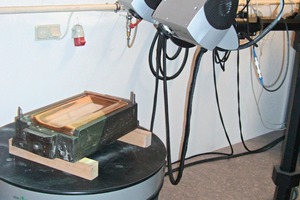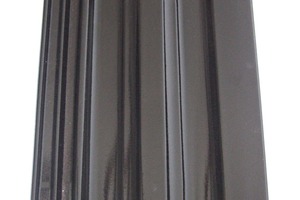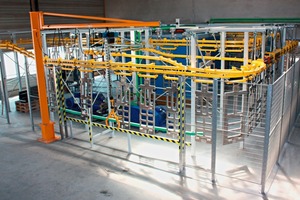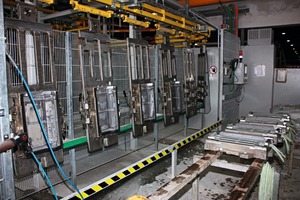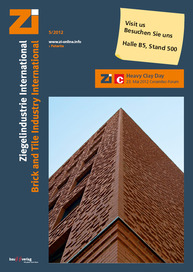Since 1978, Franz Banke GmbH has been supplying to and partnering with the roof tile industry. From developing new tile models to designing and building pressing tools and moulds, it is one face to the customer at Banke‘s. Close integration between tile development, mould construction and specialized production enables short lead times, flexible reaction to the customer‘s requirements, and cost-effective tool production.
Constant investment in efficient machinery, modern tooling, up-to-date engineering procedures and implements have always been part of the company‘s basic policy under the auspices of its founder Franz Banke and Thomas Banke, his son and present general manager. Over the past two years, for example, Banke has systematically built up its capacities for skirting production by installing additional wire-cut EDM units, while an old pair of milling machines were replaced with a modern new milling unit, and the optical digitalizing system was retired in favour of a new system. That new optical scanner examines existing tile models more quickly, more precisely and with higher-quality results for subsequent optimization and adaptation. With the thusly obtained data, existing models can be thoroughly optimized, including the applied tile technology (overlap, support on frames, cassettes, stacking, stormproofness, ...). Also, bricks can be examined for weight-saving potentials and modified for use in rain- and windproofing systems.
Just now, an annex is being added to the existing building to give Banke‘s experienced, well-trained team optimal working conditions. All these investments are geared to maximizing the efficiency and quality of design and production, so Banke can continue offering affordable high-quality tools and services.
New roof tile models
In the course of the past three years, and in close cooperation with the customers, Banke has developed a number of new models that have already become well established on the market, e.g., Röben‘s new Piemont, Erlus‘ curved interlocking SL, the W4v for Walther, Jacobi‘s J11v and the F12 (north and south versions) for Nelskamp.
For the Creaton facility in Dorfen, Banke redesigned the familiar MZ3 to obtain the new Ratio, and then cooperated with the Wertingen facility to transform the existing Harmonie into the Harmonie Neu. Together with Braas, Banke accommodated the double-trough interlocking Granat 13V to today‘s criteria. For one thing, that tile‘s covering clearance (overlap play) was enlarged to make the model more flexible for use in restoration/renovation projects. Just last year, the iF product design award was bestowed on the remodelled Granat 13V.
Plaster preparation systems
Franz Banke GmbH also builds plaster preparation equipment, i.e., the AVM20 gypsum processing machine and a variety of plaster presses. In 2009, after years of collecting ideas, conducting concept studies and engaging in intensive development work, the company successfully commissioned its fully automatic ARA plaster purging plant. A second such system was installed at the same location a year later, and both units have been in productive service ever since. The ARA employs a high-pressure water jet to automatically clean the worn plaster liners of the working mould. The ARA purging system effectively automates an otherwise monotonous, time-consuming, cost-intensive workstep. Of course, that not only requires a set of purging booths, but also an appropriate conveying system for moving the moulds through the plant. The worn working moulds are suspended in workpiece carriers, forwarded to the purging booth, cleaned out and removed to make room for the next plaster liner. Thanks to appropriate buffer sections, all the forms of a complete press load can be mounted all at once and the purged one by one. The ARA purging system is of modular design and can be made up of as many individual booths as may be needed for the respective capacity requirements.
Hall B5, Stand 300

